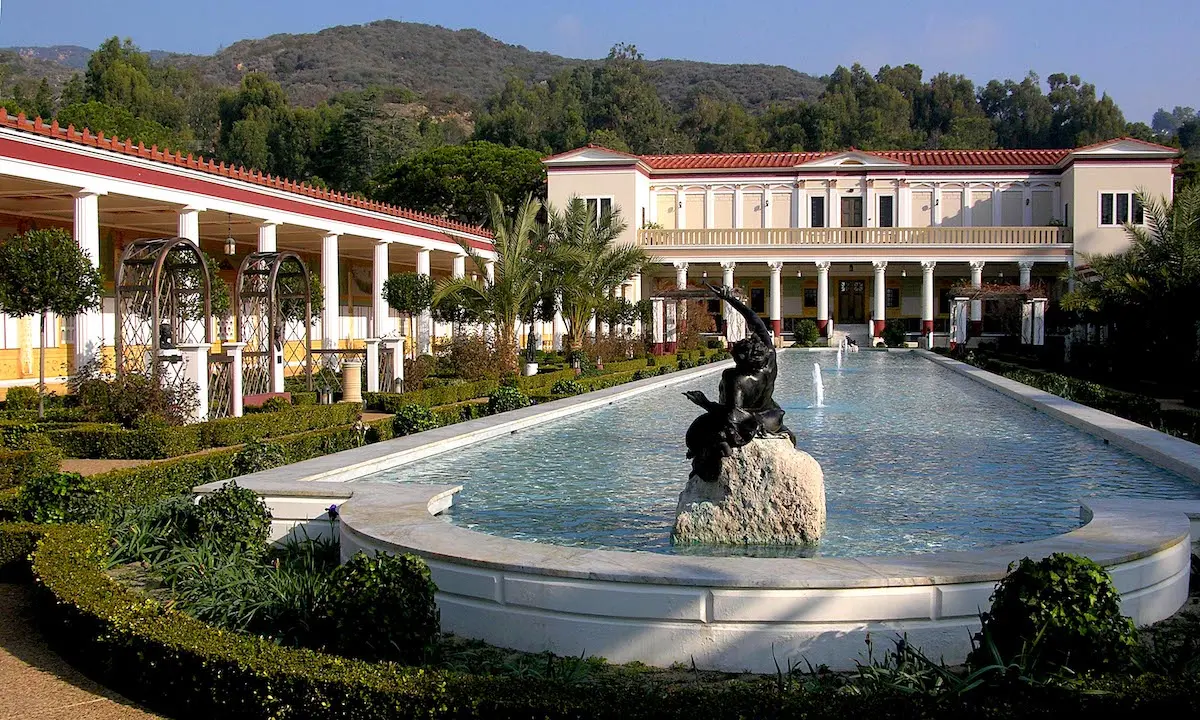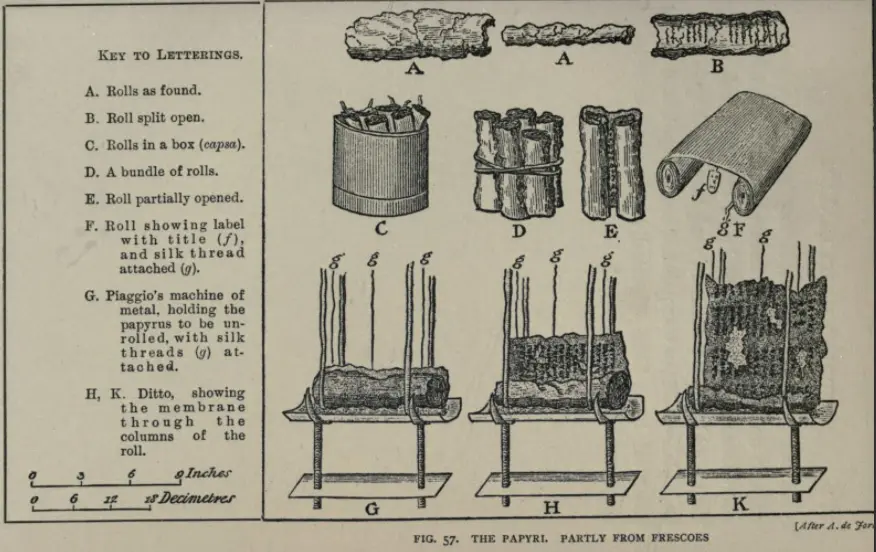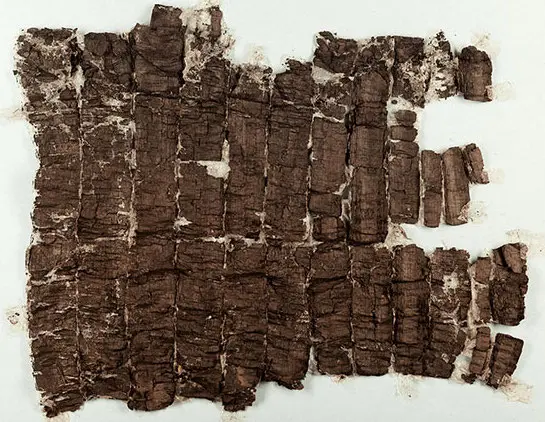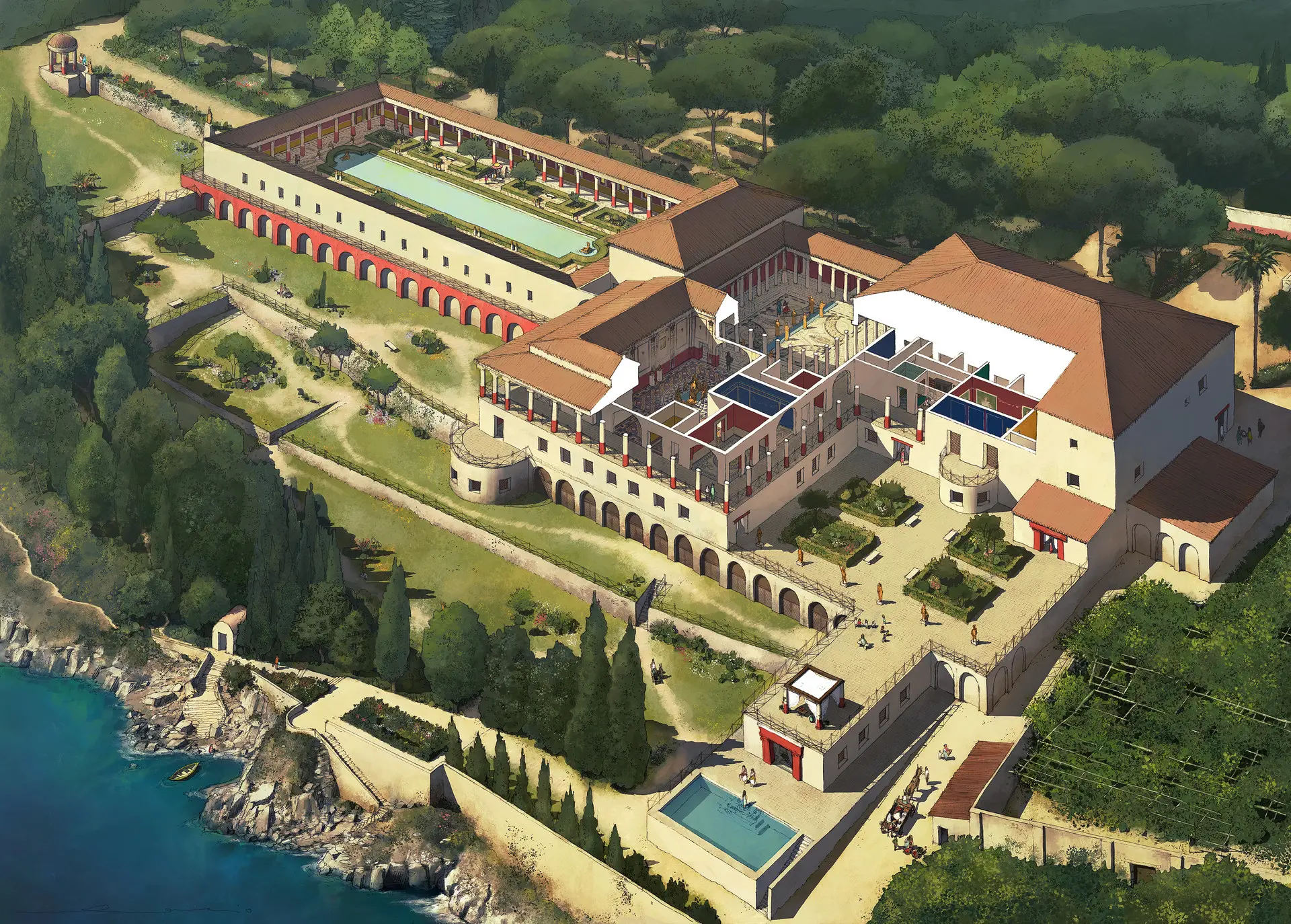History
Guest post by Dr. Garrett Ryan
Our understanding of the ancient Greeks and Romans is based on texts. Although we have other sources of information about the classical world, it is through texts – literary works originally written on papyrus scrolls — that we have received the ideas on which western civilization was founded.
Since 99% of these texts were lost during the Middle Ages, almost everything we know about Greek and Roman literature is based on the tiny selection of ancient works preserved by medieval copyists.
The Villa of the Papyri at Herculaneum could change that.
The Villa of the Papyri
Herculaneum was a Roman town on the Bay of Naples that was buried, along with the neighboring city of Pompeii, by the eruption of Vesuvius in 79 AD. After its accidental rediscovery in 1709, Herculaneum was explored by teams of workmen who drove tunnels through the rock-hard volcanic debris blanketing the ruins.
In 1750, a tunnel reached the enormous seaside mansion now known as the Villa of the Papyri. Dozens of bronze and marble statues were found inside, testifying to the wealth and taste of the man who likely built the mansion: Lucius Calpurnius Piso, the father-in-law of Julius Caesar. The villa’s true treasures, however, only came to light after two years of tunneling, when diggers began to encounter lumps of what appeared to be charcoal. It was gradually realized that these were papyrus scrolls, carbonized by the heat of the eruption.
Some scrolls were discovered in the charred remains of a cabinet, and others in three carrying-cases. The vast majority, however, were found in a small room lined with wooden shelves. Over the course of two years, about 1,000 scrolls, many in pieces, were recovered from the villa.

Reading (and destroying) scrolls
Initial attempts to open the scrolls involved chopping them in half lengthwise and peeling back layers from the inside. After a few years of such butchery, the scrolls were entrusted to Antonio Piaggio, a scholar from the Vatican Library who devised an ingenious machine to unroll the scrolls using weights on strings.

Piaggio’s machine was used, with varying degrees of success, to open hundreds of the best-preserved scrolls. Other papyri were doused in chemicals, blasted with gasses, sliced, diced, and pulverized in various attempts to read them. The small fragments used for ground truth data in this competition were probably detached during one of these destructive experiments.

Undoing the Dark Ages
The small room in which most of the scrolls were found seems to have been the working library of Philodemus of Gadara, an Epicurean philosopher who lived a century before the eruption of Vesuvius. Unsurprisingly, most of the papyri found there were works of philosophy, many written by Philodemus himself. If read, the hundreds of unopened scrolls waiting in Naples would transform our knowledge of ancient philosophy.
The scrolls we have now may be just the beginning. When part of the Villa of the Papyri was cleared in the 1990s, archaeologists realized that the building was much larger than previously thought, with two unexcavated levels. At the very least, these floors likely contain more papyri in cabinets and carrying cases. And it’s probable that they conceal a far greater treasure.

We have not yet found the villa’s main library, which would have contained a much wider range of Greek and Latin literature. That library, with its thousands or even tens of thousands of scrolls, must still be buried. If those texts are discovered, and if even a small fraction can still be read, they will transform our knowledge of classical life and literature on a scale not seen since the Renaissance.
A New Chapter
In 2023, Vesuvius Challenge added to this story by recovering text from one of the still-rolled Herculaneum scrolls. In 2024, we want to get from reading 5% of one scroll to 90% of four scrolls. Join us!
